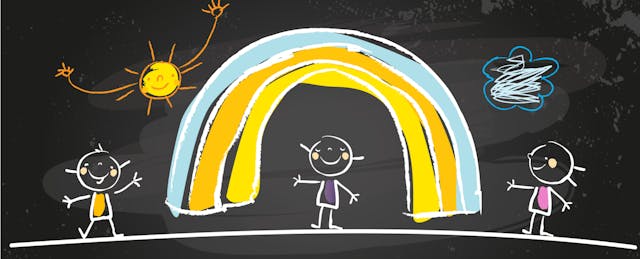Since the COVID-19 pandemic began, there’s been a lot of discussion about digital equity in U.S. public schools. But the virus has drastically expanded another gap that is key to children’s learning and wellbeing: out-of-school enrichment.
Through enrichment, children form bonds with peers and mentors and find sustenance for their passions, interests and social-emotional development. At the Connected Learning Lab at the University of California, Irvine, we have conducted many studies of out-of-school programs that serve Black/BIPOC and low-income youth. Community-based organizations, such as Boys and Girls Clubs, The Clubhouse Network and YOUmedia Learning Labs, are safe spaces where young people can stop by after school to hang out with friends, get help with homework, take enrichment classes and grab a snack.
“When I need someone, she’s always there,” says one teen about an educator at the TGR Learning Lab in Anaheim, Calif.
“The biggest thing is, they let you pursue your own interests and support you when you find something you’re interested in,“ says one young woman about the ListoAmerica Clubhouse in Tustin, Calif. “I really do feel like it’s a family here,” says another.
Organizations like these have continued to stay connected with their members with virtual offerings during pandemic-related closures, but with limited or no support from public sources.
Approximately 70 percent of afterschool care and enrichment providers—most operating through schools—shuttered due to the pandemic, and most summer camps were cancelled, according to the National Afterschool Association. Libraries, lifelines for low-income families in the afterschool hours, have largely remained closed to patrons during the pandemic. Scores of low-income youth, who have relied on these organizations for technology access and vital emotionally and academically supportive relationships, have been cut off.
This enrichment gap was growing well before the pandemic. Upper-income households have been investing more in their children’s extracurricular activities in the U.S. every year, at a rate that outpaces in-school learning.
Statistics compiled by the New York Times show a growing equity gap in education. Especially notable is a gap in enrichment investments that dwarfs other inequities. Wealthy families’ annual per-child expenditures on enrichment activities nearly tripled between 1972 and 2006 (from $3,536 to $8,872) while low-income families remained stagnant at around $1,000.
This gap has only widened as for-profit online enrichment has exploded during COVID-19. We’ve seen edtech companies pivot by pouring more money into direct-to-consumer platforms, which benefits those who can afford to pay the price.
Many individuals, nonprofits and corporations have offered creative solutions over the past few months to fill these growing gaps in access to enrichment. The Boys & Girls Club and YMCA have stepped up to organize “learning hubs” for working parents. The North America Scholastic Esports Federation, supported by the Samueli Foundation, offers free online afterschool gaming coaching, clubs and tournaments. My own nonprofit, Connected Camps, offers a free moderated Minecraft server for digital making activities and social time in the afterschool hours. College students have also stepped up to offer free online tutoring through a new platform, CovEducation. Online enrichment platforms such as Activity Hero, 6Crickets, Pandemicpods.org, and Outschool are offering some scholarships and grants.
These efforts are commendable, but will not make a dent in the massive need. There’s a lack of sustained public investment in addressing the enrichment equity gap, and it’s very troubling.
What we have here is not a capacity problem. It’s a supply chain problem. Educator capacity sits untapped at a time of unprecedented need. Out-of-school educators, such as librarians, coaches and museum staff have suffered massive layoffs, as have classroom teachers. During this boom year for for-profit online education, afterschool educators have not been tapped to serve the needs of the less advantaged through public and equitable options.
Schools and districts have understandably been focused on continuity for their formal academic programs, but we ignore interest-driven and socio-emotional learning at our peril. Students can’t thrive academically without sustenance for their passions, social and emotional health and supportive relationships with mentors and coaches.
Some regions, such as Washington and Nevada, have begun to mobilize digital access initiatives that include schools as well as community-based organizations. As we look toward long-term support for online and hybrid learning, it's imperative that public leaders consider critical equity gaps and quickly move to increase funding for enriched and out-of-school time learning.


